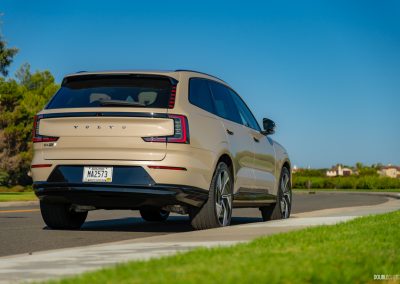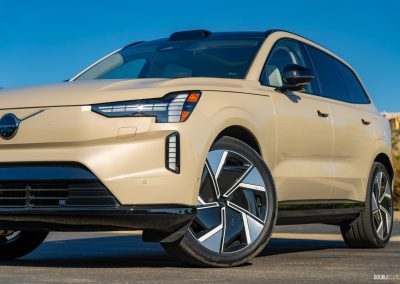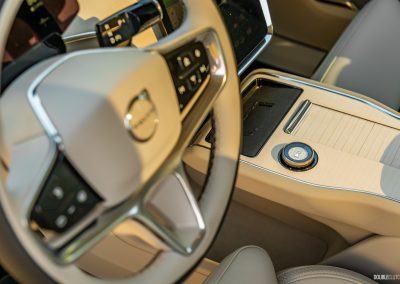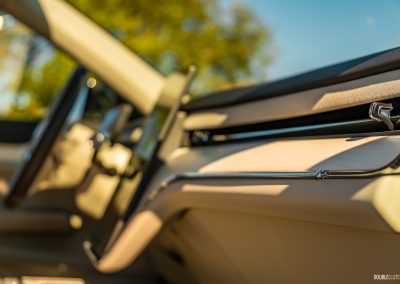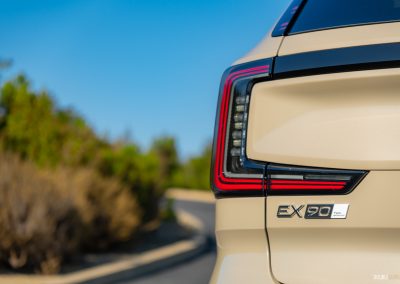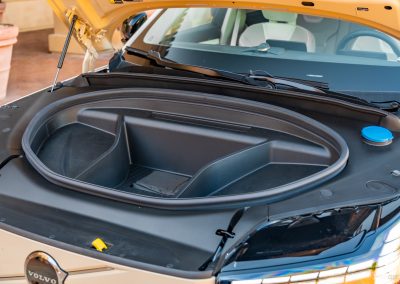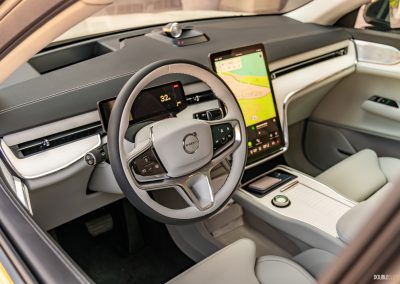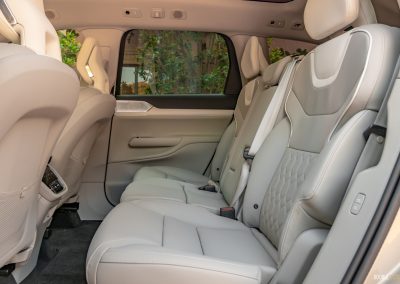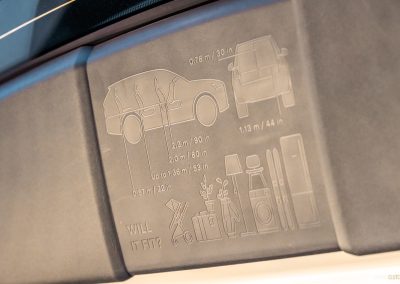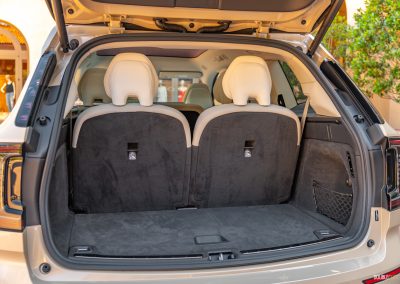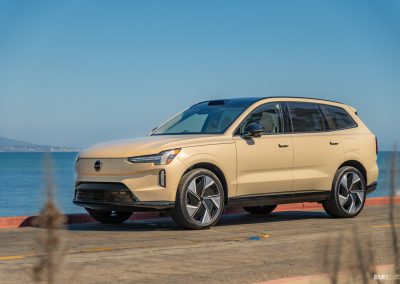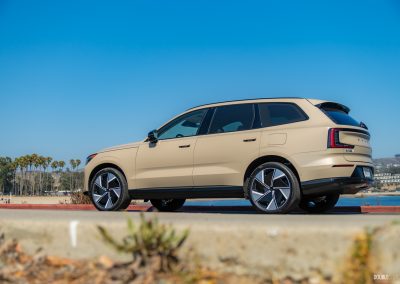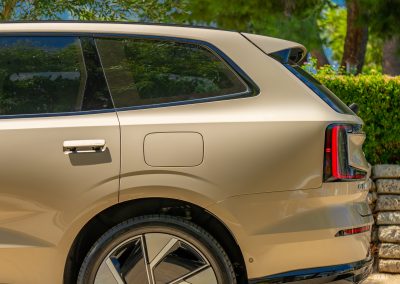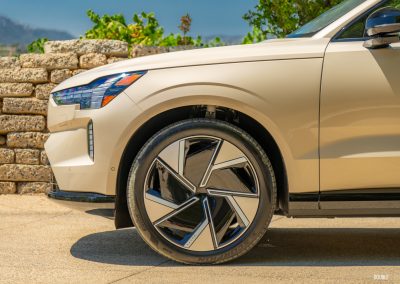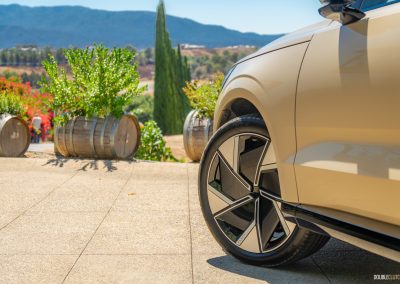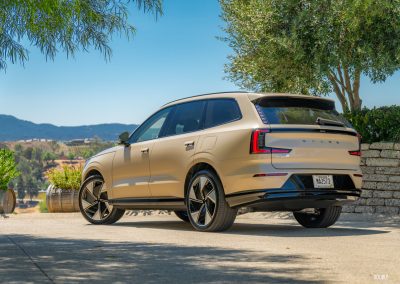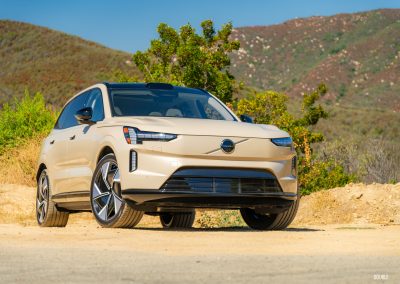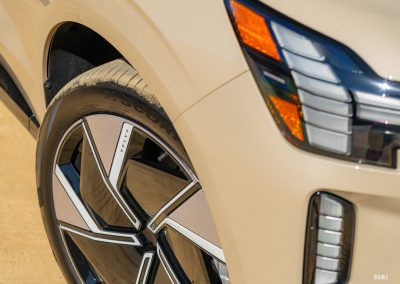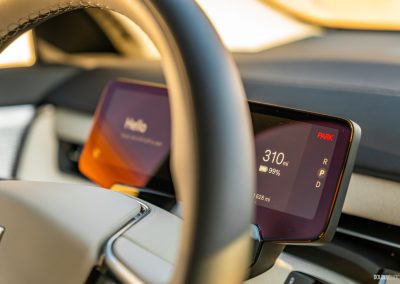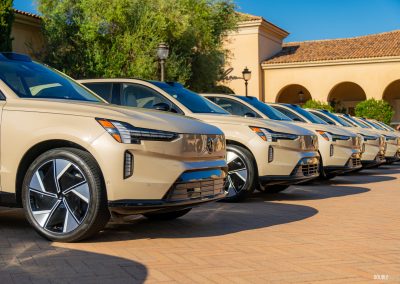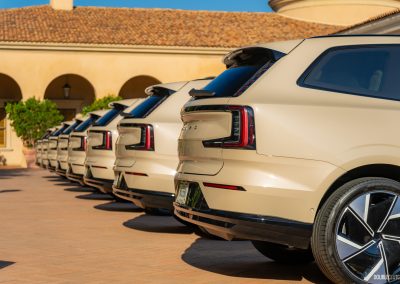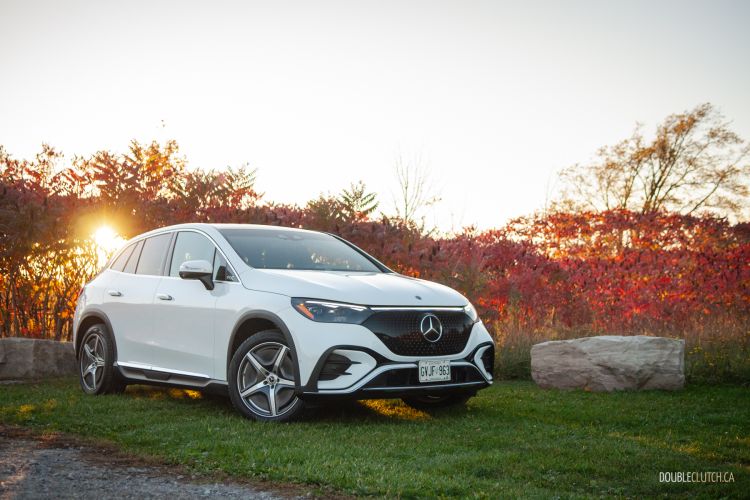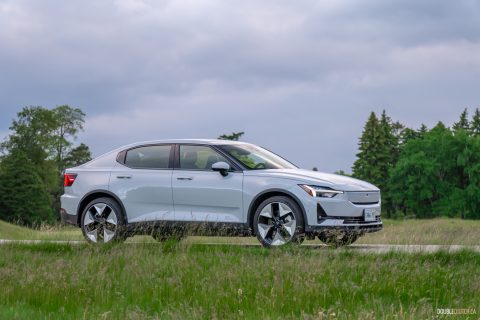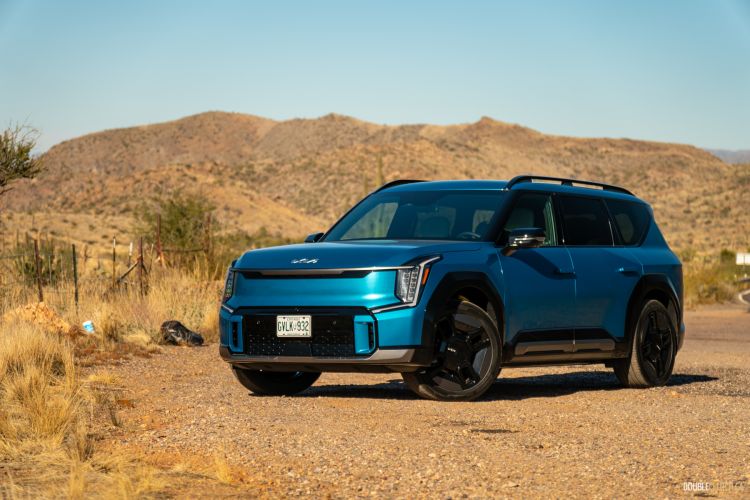NEWPORT BEACH, CALIF. — Let’s talk about brand affinity. If you have an iPhone, you probably also have a MacBook, and you’re probably going to like anything Apple puts out because you know you like the way they do things. Even when they do something that sounds, maybe a little dubious — like, say, deleting the 3.5-millimetre headphone jack — you’re willing to give it a shot because you trust they’re gonna execute it in a way you’re gonna jive with. This is how I felt about the 2025 Volvo EX90, which they graciously invited us to California to check out.
I like Volvos. I like the way they do things. A Venn diagram of the things I value in a car and the things Volvo values in a car would pretty much just be a circle. I’m not personally super keen on EV adoption, I’m not nuts about Google software interfaces in cars, and I straight-up dislike ultra-minimalist control interfaces that do away with physical buttons for basic functions. With the all-new, all-electric EX90, Volvo has doubled down on all of that. But, I trust Volvo, so I’ll give it a shot.

Built in the freshly retooled Charleston, South Carolina plant that used to build the dearly departed S60 sedan, the EX90 rides on Volvo’s first new set of bones in a long time. It’s a modular architecture designed specifically for electric vehicles, enabling both greater battery capacity and a larger cabin space. Canada will initially get the higher-end EX90 Plus and Ultra trim levels, with the Plus being pretty much loaded, and the Ultra adding some dressy lighting elements, massaging seats, and two-chamber adaptive air suspension.
Either way, you’re getting a 111 kWh battery, driving two motors and putting out 510 horsepower. As of this writing, its range hasn’t been certified by the EPA, but they’re guessing it’ll land around 495 kilometers — which tracks with the EX90’s own on-board range estimates. The new battery supports a maximum charge speed of 250 kW, allowing it to go from 10 to 80 per cent of a charge in half an hour. I liked the XC40 Recharge plenty and I loved the V60 Polestar plug-in hybrid, so I’ll trust this will be pretty excellent.
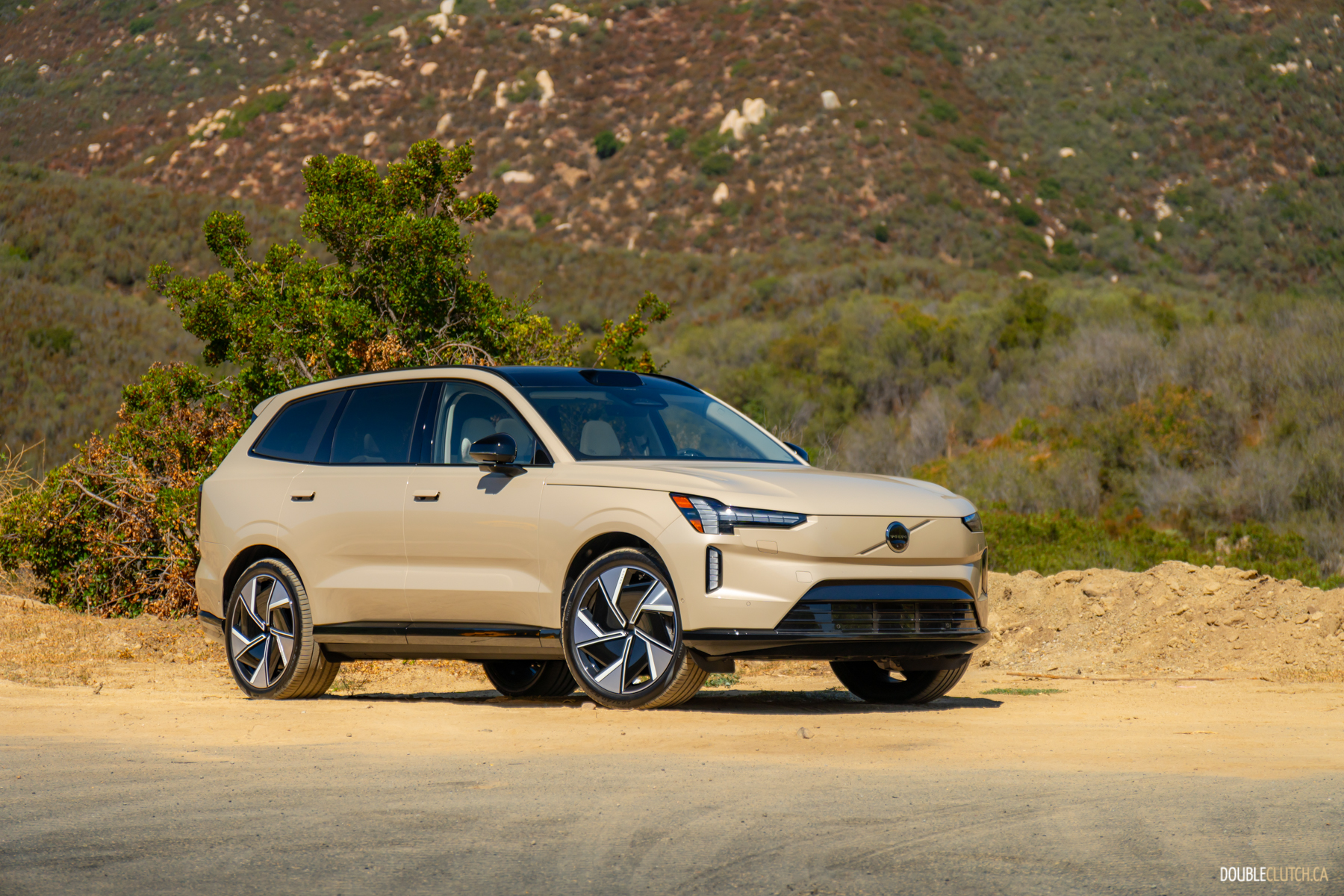
Ditto for Volvo’s interior and exterior design, which they’ve never missed. Outside, the EX90 is typical Volvo in the best way, with a signature Scandinavian clean design that bears a distinct resemblance to the existing XC90, but moves the needle enough to distinguish itself as something fresh. Like the XC, the EX90 will stay fresh-looking for many moons to come. No surprises here, of course the EX90 is a handsome vehicle.
What is a little bit of a surprise is the interior design. I should clarify by saying that it shouldn’t be a surprise in the slightest; this has always been one of Volvo’s greatest strengths. And like the exterior, the EX90 carries forward the successful ethos that served them well, while updating it meaningfully to keep up with the Joneses. That’s where it surprises me, because it does the same thing started by Tesla and (dramatically) improved on by Rivian, in that there are almost zero buttons anywhere.

The EX90 doesn’t even have dedicated controls for adjusting the mirrors or steering wheel. It does something very similar to Rivian, with context-sensitive steering wheel controls to handle those functions. Climate controls were already mostly on Volvo’s centre screen, and now they’re entirely on the screen. Your sole physical controls are a prominent knurled volume knob with an integrated play/pause button on the floating centre console, capacitive steering wheel controls, and a pair of very satisfying stalks for turn signals, wipers, and a PRND selector — which also does double-duty enabling the adaptive cruise control.
This sounds bad to a curmudgeon like me, but again, I trust Volvo. Their most central tenet is safety in vehicle design, and they wouldn’t implement this kind of control and design schema if it weren’t fundamentally intuitive and effective. They know better than anyone else in the business that time spent interacting with a touchscreen is time not spent looking at the road — which isn’t, you know, safe. This is partly alleviated by an armada of cameras and radars sensing the world around you, but fundamentally circumvented by smart design.

The centerpiece of this new tech showcase is a 14.5-inch portrait display that’s sharper and snappier than before, and running all-new software. No more awkward mixing of Volvo and Google; it’s been mixed into a pretty elegant cocktail here. The home screen is a large map, with two widgets for phone connectivity and media playback, a context-sensitive bar whose functions change depending on the driving situation — for example, the Performance AWD button becomes a camera button at low speeds — and a bar with fixed buttons and shortcuts for climate control and other vehicle settings.
I’m happy to report it works really well, and is comfortably among the best in the industry. It’s easy to figure out, intuitive, and attractive. It’s flanked by a small screen acting as a gauge cluster, similar to the Mustang Mach-E but better-executed, with customizable modes for a map or a radar telegraphing what it sees surrounding traffic doing. The radar gives extra piece of mind, knowing what the extensive suite of driver aids are seeing and thinking. This new sensing capability also gives Pilot Assist the capacity to change lanes now, along with doing nearly all of the driving for you.

While the EX90 does a terrific job directing itself, you should try doing it yourself, because it’s really good. Volvo has always been keen about taking care to ensure a car inspires confidence from its driver. It’s important in the pursuit of safety, but it has a wonderful side effect of making Volvos gratifying to helm. The throttle response is well-judged and linear, and feels effortless (read: quick) without being too eager.
Ditto for the brakes. They’re notoriously tricky to gauge on an EV, with the regenerative effect inherent in electric motors. They feel firm and natural here, and the regen function in one-pedal-mode has been calibrated to not slam on when you take your foot off the throttle. So when you’re, hypothetically, driving a little on brisk side through the canyon roads in California, the EX90 still feels natural and avoids the cumbersome internal dilemma of whether or not to use the brakes.
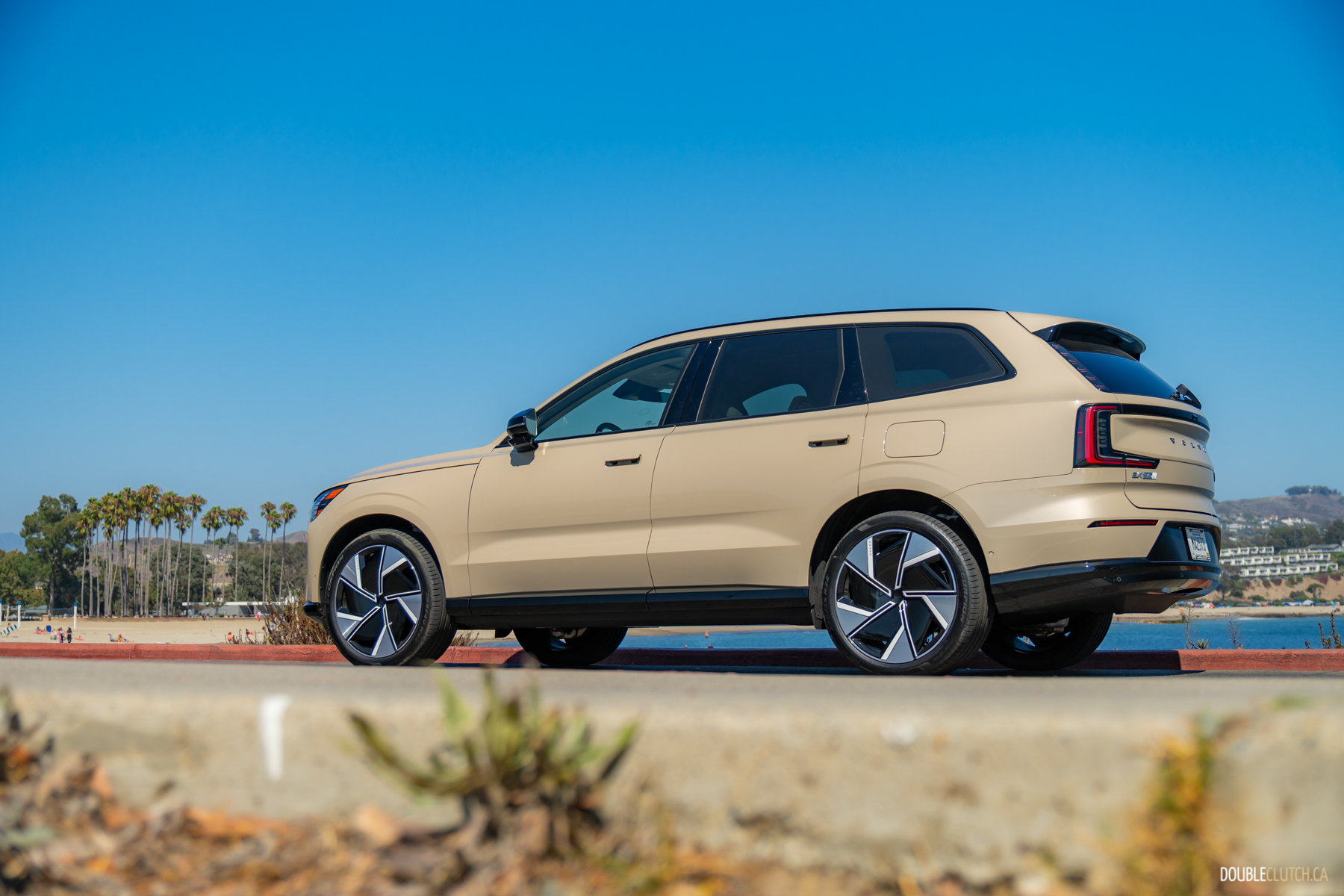
It’s actually remarkably good to drive. The EX90 does a very impressive job of hiding its heft behind a deftly dialed chassis, rather than burying its limit behind an electronic safety net that breaks down alarmingly when your enthusiasm outruns the laws of physics. This is aided in part by the air suspension, which hunkers down and firms up when you’re cooking. It’s facilitated by excellent steering feel; Volvos have always been good about that, but this represents a noticeable jump in communication among EVs, at least to me.
But maybe you don’t want communication. Maybe you want to be isolated. The EX90 is even better at that — it’s the quietest vehicle Volvo has ever made, and they didn’t exactly struggle with that before. Wind and road noise are almost deleted, as are imperfections in the road, gobbled up by the literal cloud of air it rides on. Secondary forces from the huge 22-inch wheels are comfortably quelled, too.
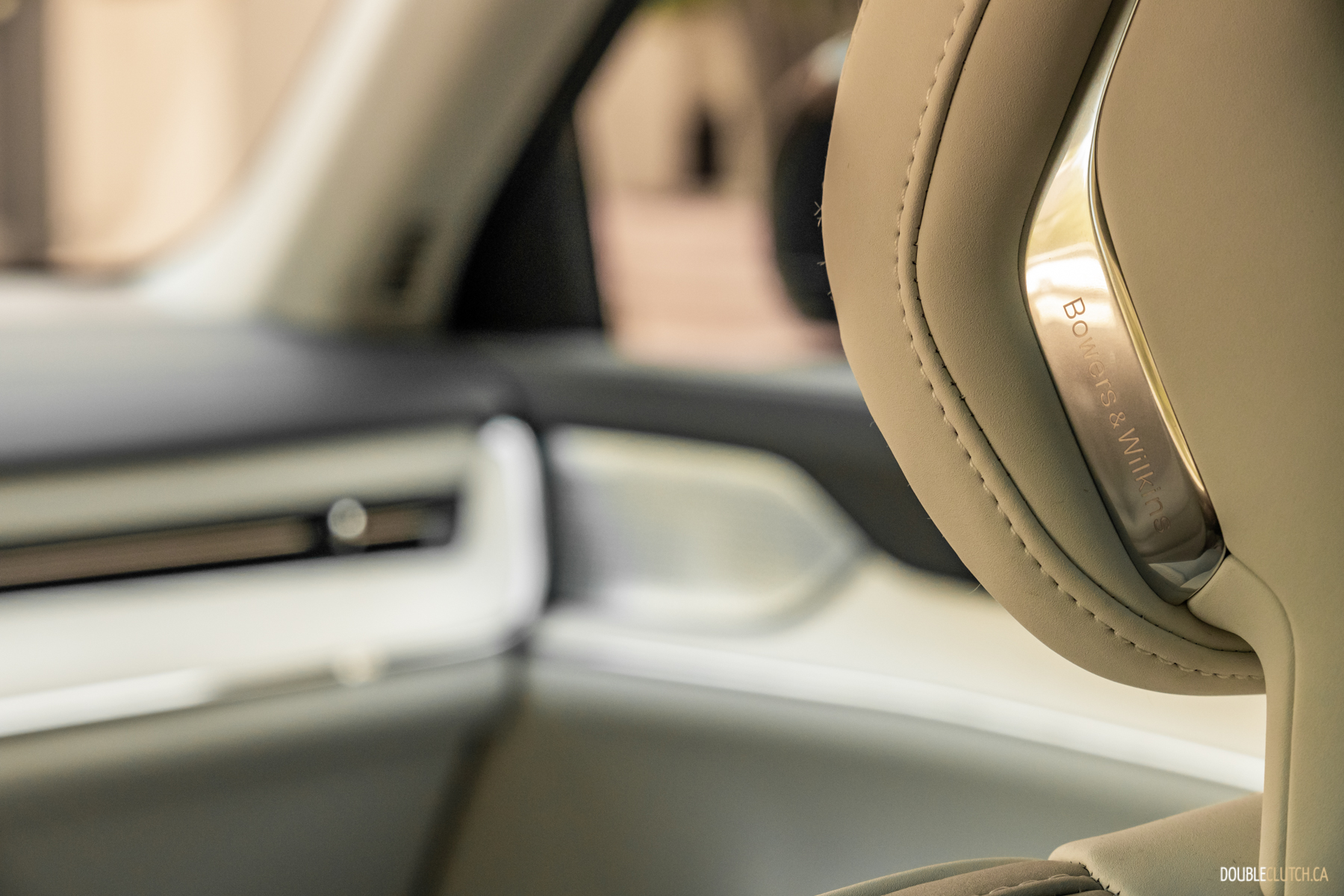
Between the top-notch sustainably sourced interior materials, orthopedically sculpted seats, excellent visibility, ergonomic control design, and impeccable aesthetic, the EX90 is an absolutely lovely place to sit. There’s tons of storage, loads of leg room for the first two rows, and even the third row is tolerable, made especially airy by the panoramic roof. The optional 25-speaker Bowers & Wilkins sound system only makes things even nicer still, being among the absolute best you can buy.
I feel like a bit of a broken record, saying “best in the industry” or something to that end over and over again. I’ve struggled to come up with different ways to say it regarding ride comfort, driving dynamics, or whatever else. But the bottom line is that the EX90 is an excellent vehicle. It’s so good that its appeal goes well beyond the limited scope of the EV segment, which tends to focus on tech, charging speed, and short-sighted gimmicks over the core tenets of proper car design. Sure, the EX90 does the EV things well, but it’s more than that.
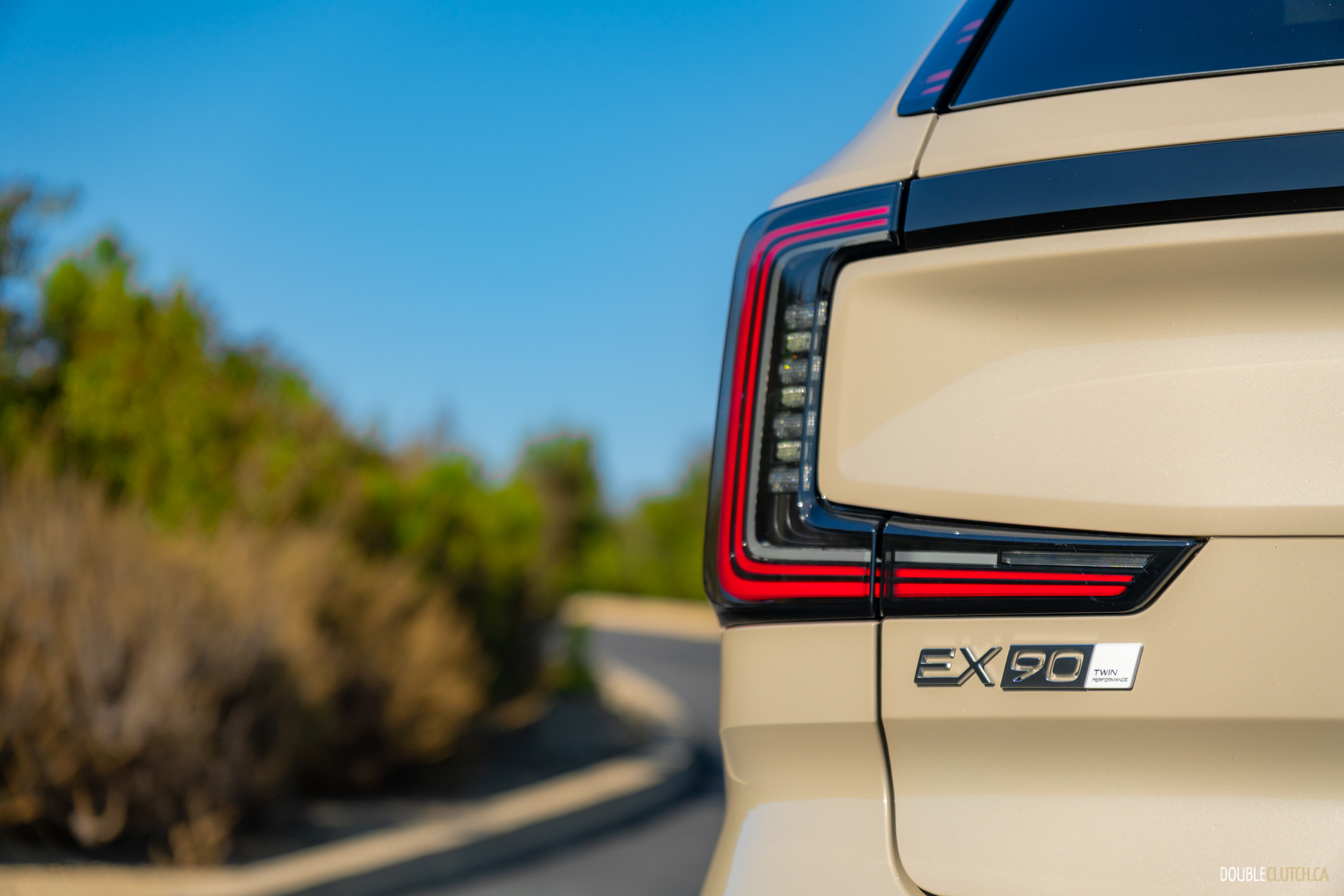
I’ve driven all the other big luxury SUVs, and the 2025 Volvo EX90 strikes me as one of the finest options in that space, especially at its starting price of $110,000 in Canada, or $115,600 for the Ultra with air ride and massaging seats. It’s not cheap, but look at what else is out there. When you look at the level of comfort, practicality, driving dynamics, technology, gorgeous design, and overall pleasure-factor, the EX90 is a compelling package regardless of what’s propelling it, or whether or not you care about its eco-friendly material choices. The EX90 is not just good for an EV, it’s not just good despite being from a small-ish boutique builder; it’s just good, full stop.
Orders are already open, deliveries are expected to begin this fall.



